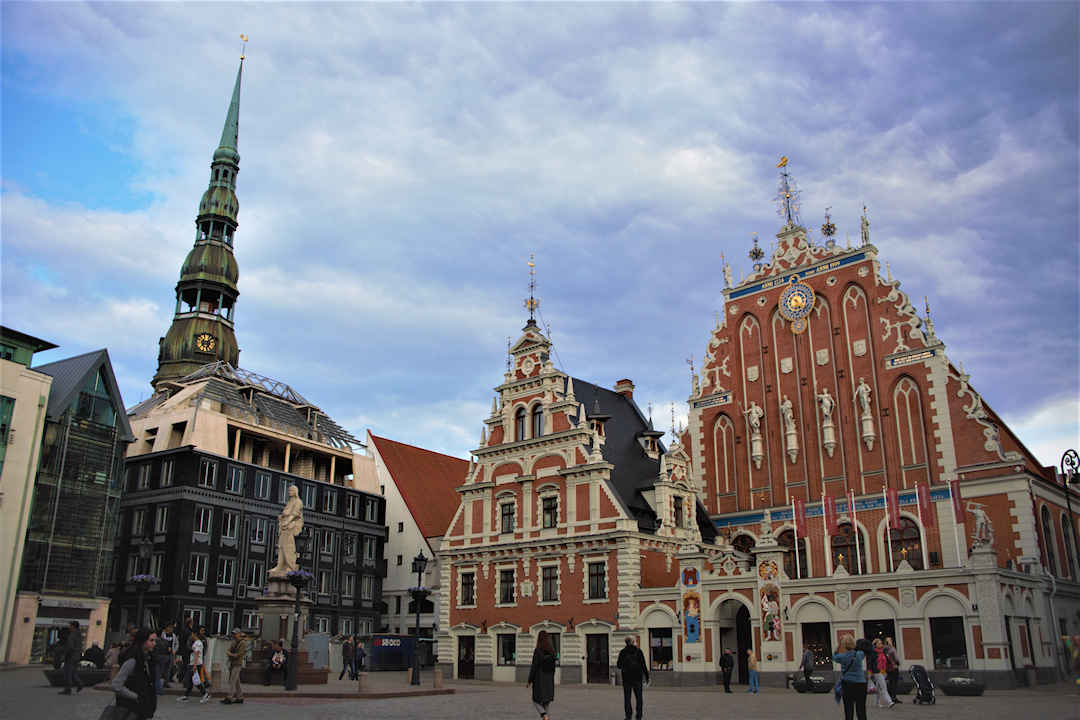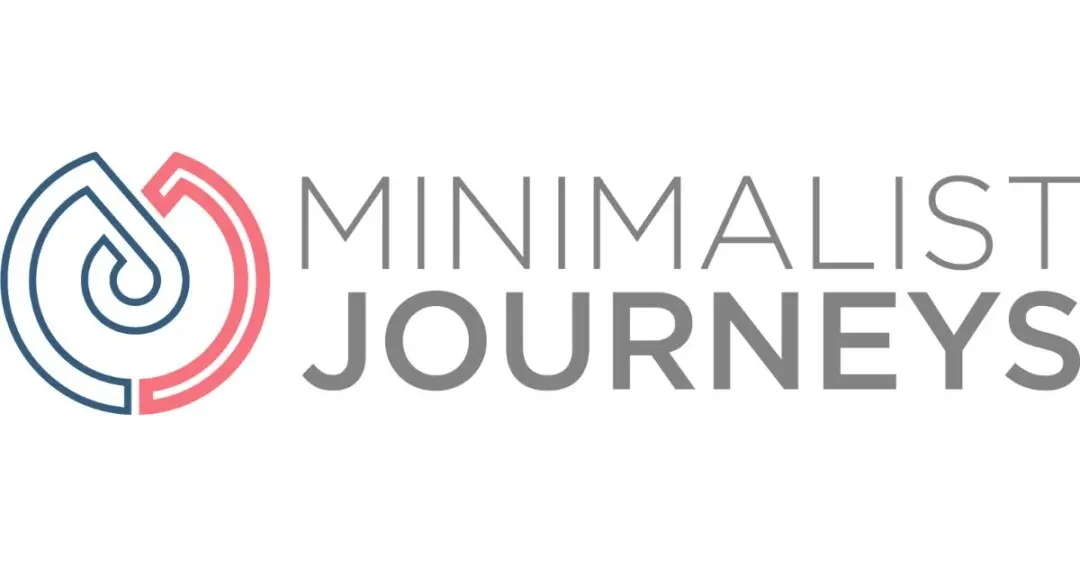This article may contain links to products and services we use and recommend. We may receive compensation when you click on links to those products. For more information, see our Disclosure Policy.
Latvia is situated in North-Eastern Europe, between Lithuania and Estonia. With good (and reasonably cheap) flight connections to other European countries, the number of visitors to Latvia, particularly its capital, Riga, is rising.
If you plan to visit this Baltic country, you might wonder how affordable it is. Our daily expenses in Latvia totalled USD51.77 / EUR46.10 per person per day, a bit over our budget of USD50.00. We attribute this to slightly higher accommodation costs (than in Lithuania) and to dining out a little more than usual. Read on to find out what we spent our money on.
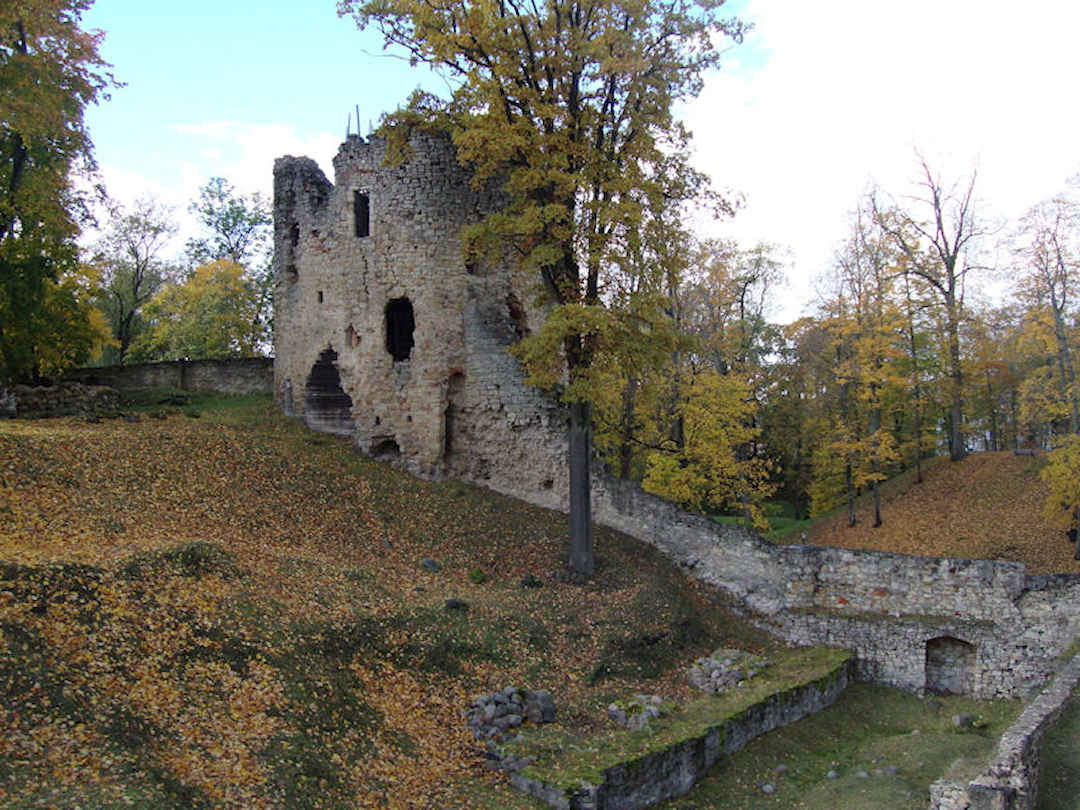
Exploring Cēsis Castle is one of the best value for money activities you can do in Latvia
Is Latvia expensive to visit?
Latvia is a little cheaper than other European countries we have visited. However, it is more expensive than in Latin America. We keep tabs on travel costs for different countries as we roam the world. Check our travel costs by country list and see how much your next trip may cost.
Travel Cost Assumptions
When reading this article, please note that our travel costs are based on a couple travelling together. We are independent, budget-conscious travellers, researching and organising our itineraries using our go-to travel planning tools.
Our travel style is reasonably consistent wherever we go, which is excellent when you want to compare travel costs between destinations and over time:
- Accommodation: We usually stay in self-catered accommodation (homestays, locally owned guesthouses, hostels and short-term rentals) - in our room with (preferably) a private bathroom, though the kitchen and other areas may be shared.
- Dining and Groceries: We usually eat two meals a day at home. But we like to eat out once a day or at least every few days (and prefer locally owned restaurants and small eateries away from the tourist hotspots).
- Experiences: Many of our activities are free or low-cost. When we pay for attractions or activities, we are very selective, as our funds are limited, just like everyone else's (while we're travel bloggers, we seldom get a free ride).
- Transportation: We walk frequently and use public transportation wherever possible. We only occasionally hire a vehicle. The costs to enter or exit a country are not included (though we may include them for reference in the comments).
- Other: Our total daily costs also include mail scanning and forwarding services (as we are location-independent), our mobile phone and data plans, and travel insurance, although only as they relate to the time spent at our destination.
Map of Accommodation, Points of Interest, Eateries and Transport
Below is a map of the recommended accommodations, points of interest, eateries, and transport terminals or stops mentioned in this article.
Accommodation
We stayed at three locations in Latvia. Since staying there, two are no longer offered as short-term rental accommodation.
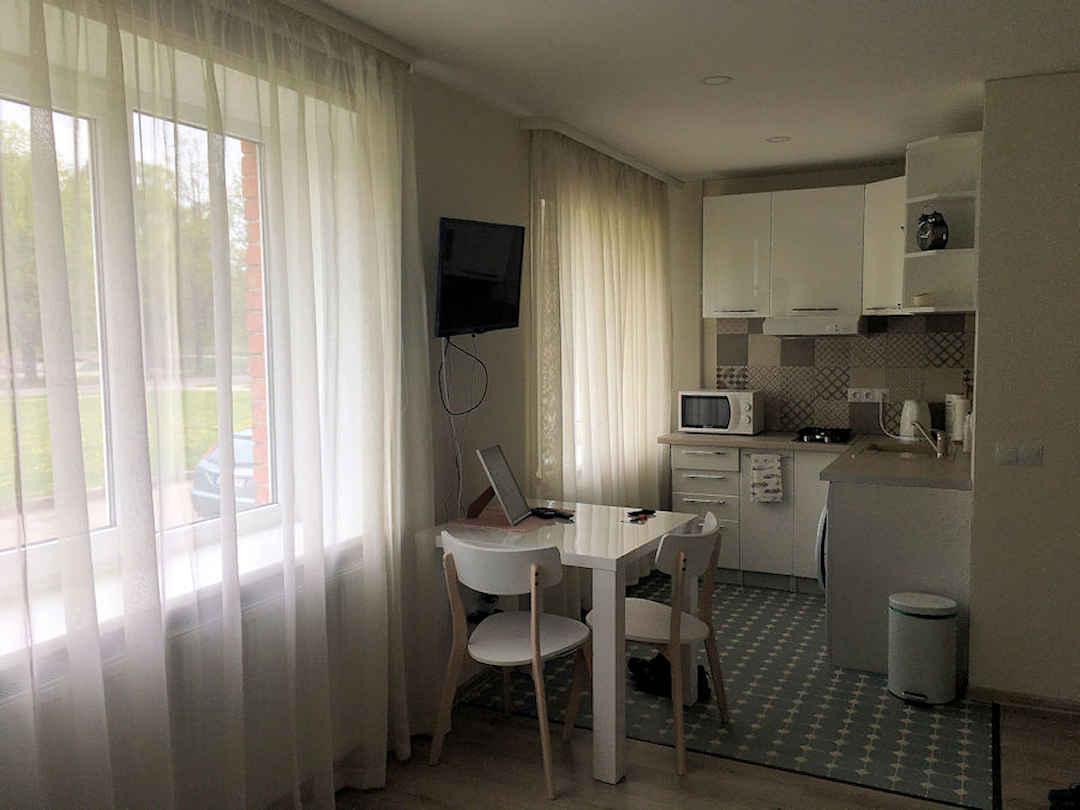
Studio apartments might be small but have everything you really need
How to save money on accommodation
As with any other travel expense, it's worth shopping around to find the best deal. We look across several booking platforms to find the best value-for-money option. Nightly rates are generally cheaper outside of peak season. If you can only travel during peak season, consider accommodation options that are a little further away from the main tourist attractions but offer good public transport connections.
Wherever you book, read the fine print to compare apples with apples. For example, your stay may incur extra charges (like local tourist taxes or cleaning fees). Some booking platforms include them, while in other cases, you may have to pay your host for them upon arrival.
Transport
Like Lithuania’s capital, Vilnius, Riga’s public transport system consists of trams, trolleybuses and buses. Even though tickets can be purchased from the driver, it is significantly cheaper to buy a yellow e-ticket/talon at street kiosks and select shops and load it with several rides. Note: Don’t buy too many rides upfront, as you won’t be able to get your money back if you don’t use them all.
We didn’t use public transport in the towns of Sigulda (Population 12,000) and Cēsis (Population 19,000), as everything was within walking distance. We contemplated hiring bicycles (readily available in both towns), but the weather was too cold, so we decided not to.
After watching Chris Tarrant’s Extreme Railways, which included an episode on train travel in the Baltics, we decided to take the train (rather than the bus) from Riga to Sigulda and then to Cēsis a few days later. The carriages were spacious, and there was free Wi-Fi. For schedules and ticket prices, check out the Latvian Railways website.
How to find the best deals on rental cars
Most of the time, we use public transport to get us around. But occasionally, hiring a car or scooter just makes it easier or gets us to places we couldn't go without a set of wheels. Whenever we do hire a vehicle, our first point of call are local rental providers. A quick Google Maps search shows who's near us. We then check the reviews and only contact those other travellers had good experiences with.
If we can't find anyone we're comfortable with, we search for deals on aggregator websites. We've used Rentalcars.com and DiscoverCars.com in the past and had only good experiences with them. Both partner with trusted brands like Hertz, Avis, Budget or Europcar (and in some locations even local providers) - so you can compare car hire options in a similar way you'd compare accommodation offers across Agoda and Booking.com.
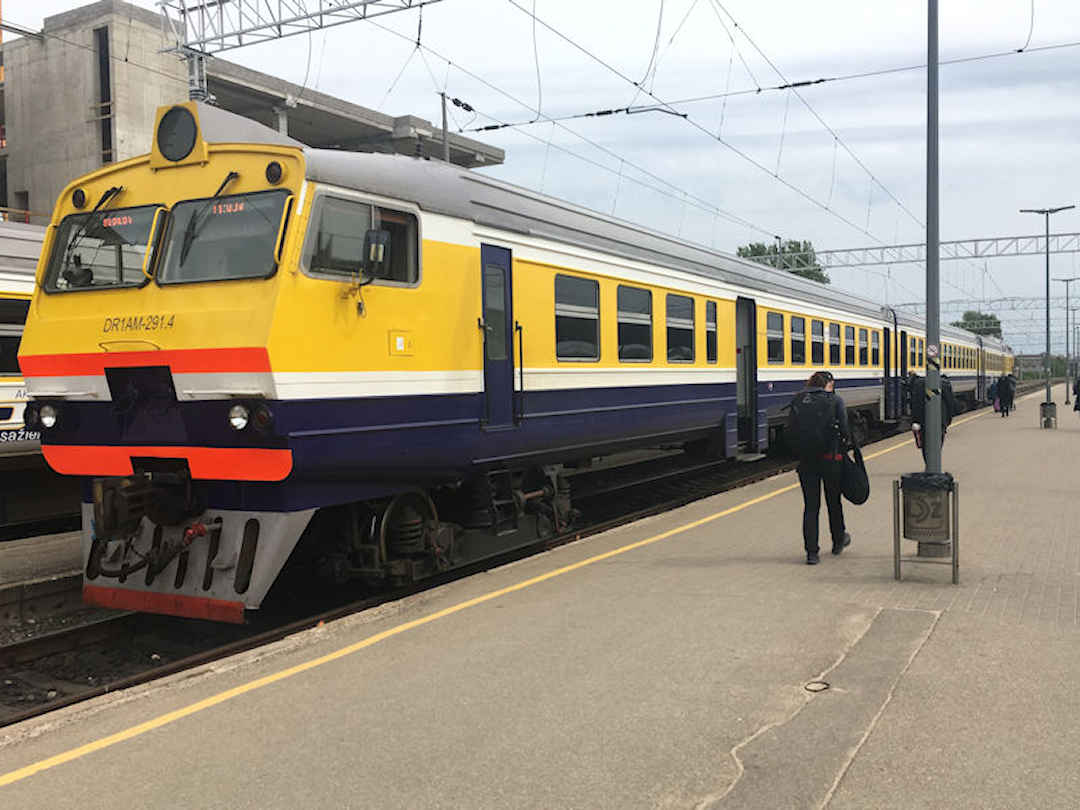
At EUR1.90 per person, it was cheaper to take the train to Sigulda than take the bus (and pay the driver) in Riga
How to save money on transportation
Being flexible pays off when it comes to transportation, particularly air travel. If possible, travel outside of peak season. If you can't, fares might still be cheaper at certain times of the week or even during specific hours of the day, so check websites like Skyscanner or Google Flights for the best deals. These websites allow you to compare monthly prices and options on any given date.
If several airports are near your home or destination, compare the prices of the different options to find the most affordable one. For example, flying to Mykonos and taking the ferry to Santorini may be cheaper than flying directly from your home airport to Santorini. If we don't know how to get from A to B, we check Rome2Rio - an aggregator website that shows connections across multiple modes of transport (with price estimates).
Air Travel
Ideally, research with your browser in incognito mode, as cookies will show booking sites how interested you are in making a particular trip, which may affect the price quoted. That applies to all online travel agents (OTAS), not just airlines. If you find a good deal, book it there and then, as prices change constantly:
- The best fares usually go first, so planning is essential for air transportation.
- The same applies to air points or miles, as only a limited number of seats are available on each flight.
If you plan to travel across multiple continents, you may want to compare passes that offer multiple destinations as a package, such as round-the-world (RTW) fares provided by OneWorld or Star Alliance members. If you travel during peak season, these multi-destination packages may be a better deal than booking each leg individually. You can do overland sections on RTW tickets, too, which means you could supplement your RTW ticket with bus and train rides or cheap flights between destinations.

You don't need to resort to hitchhiking to save money on transportation | Photo by Dmitry Shulga on Unsplash
Vehicle Rental (including Relocations)
Unless your trip takes you across oceans, another way to save on transportation is to look for vehicle or motorhome relocations. Websites in many countries offer massively discounted one-way rates (often including fuel and/or insurance) to those driving a vehicle or motorhome from A to B within a specific period. These deals are relatively last-minute, and A and B are usually more significant transport hubs. However, if that's an option, consider searching for vehicle or motorhome relocation services at your destination.
Speaking of vehicles, if you plan to hire a car at your destination, it's also a good idea to shop around. We often use aggregator websites that allow us to search across multiple car rental companies simultaneously.
Hitchhiking
A final option to save on transport costs is… to hitch a ride. While Paul and I did it safely in Dominica on a public holiday (when there was no other option) and have taken plenty of people along in our campervan in New Zealand, there are many countries where we wouldn't feel safe hitchhiking. Judge for yourself where and when you can and can't do it.
Groceries and Dining
Those who read our posts regularly know that we eat breakfast and one other meal at home and have the third meal on the road—at least, in most cases. On average, we dined out for EUR5.95 per person per day.
However, on two occasions, we did splash out a bit more:
- After hearing about the views over Riga from the Skyline Bar at the Radisson Blu Riga Hotel, we had to check it out for ourselves. With a great-looking Korean tapas menu, we decided to have dinner there, too. Korean Fried Chicken, Crispy Fried Rice, Panko Pork Belly, and three drinks set us back EUR43.19 in total. With the sun setting over Riga, we had a brilliant evening.
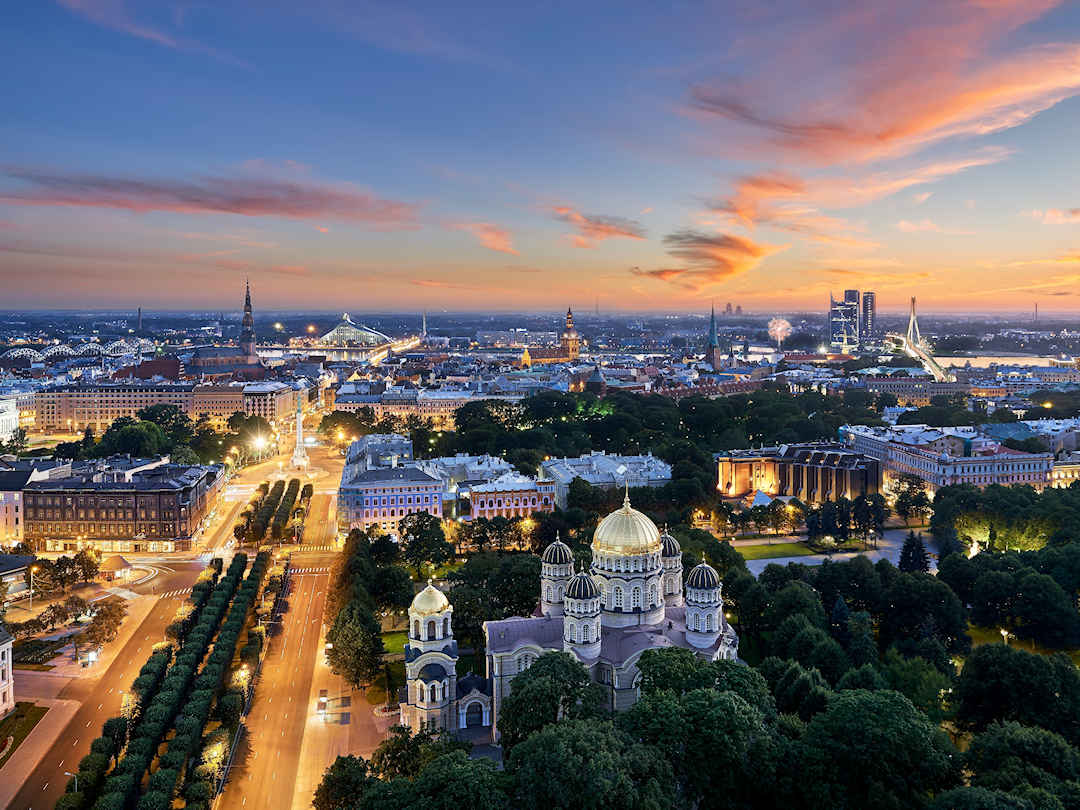
Sunset views of Riga that don't cost you a cent (unless you complement them with a cocktail and a bite to eat) | Image courtesy of Riga Radisson Blu
- Without a town centre, Sigulda presented a slightly more challenging challenge regarding restaurants. Hotel Sigulda, built in 1889 when the Riga—St Petersburg railroad opened, served surprisingly delicious food. The price of our two main dishes and drinks was EUR 25.38.
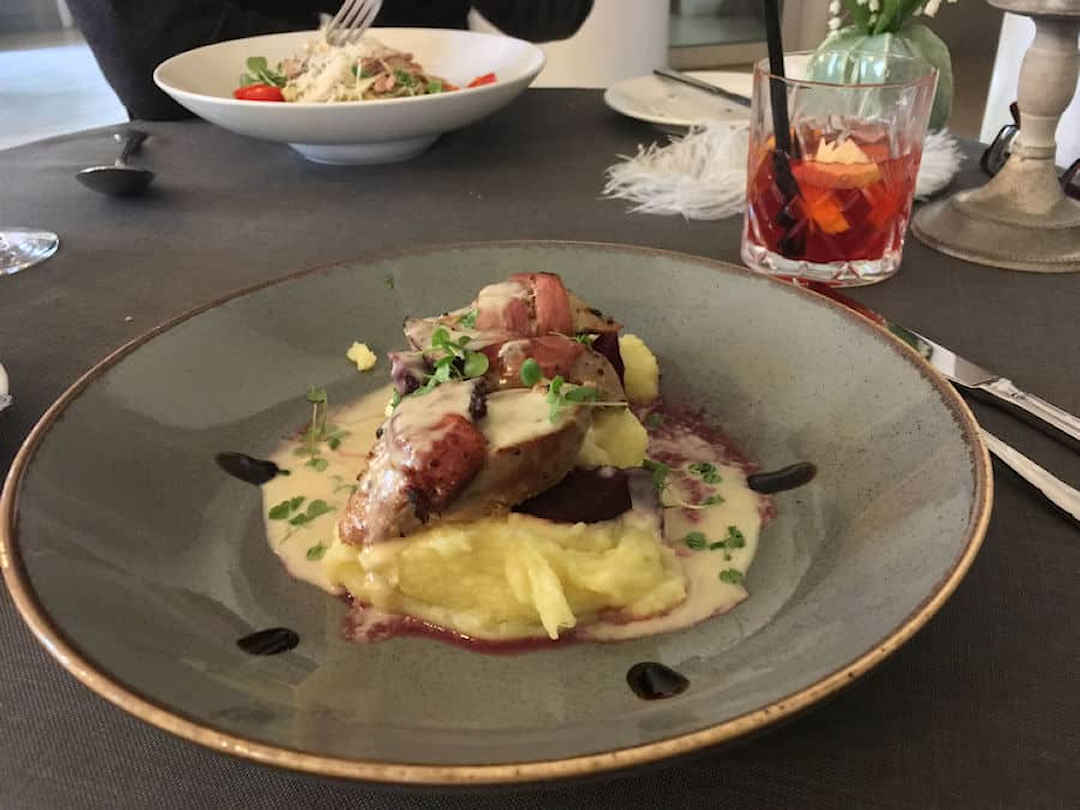
With limited dining options in Sigulda, dinner at historic Hotel Sigulda turned out to be surprisingly delicious
How to save money on dining and groceries
One of the reasons we travel is to experience the local cuisine, but dining out all the time can quickly get expensive. We therefore always try to book accommodation with access to a kitchen - either a private kitchenette or our host's kitchen. That way, we can store food in the fridge and make meals. Paul and I eat out only once a day (sometimes only once a week), usually at lunchtime. This allows us to sample local dishes while taking advantage of great lunch deals. It also means we don't have to roam around unknown parts of town every night in search of a restaurant.
Portion sizes in many parts of the world are usually substantial, so we frequently share a three-course meal. The same applies if you go out for dinner: Order a starter or salad and a main, and that's usually enough for two people. An added benefit is that there is less food waste.
Every country has both more expensive and less expensive supermarkets for groceries. Ask your host about the more affordable options (for example, Aldi or Lidl in many European countries) and try to avoid convenience stores as much as possible.
Experiences
Riga
Having never been to Riga before, we decided to get our bearings by joining the Old Town Free Walking Tour. Our guide Kaspars was brilliant, and the tour was packed with information on Riga’s and Latvia’s history, and culture. While these tours are labelled free, we always give a tip.
The walking tour took us past Riga’s medieval Cathedral. As chance would have it, an organ and violin concert was scheduled the following night. So, we took the opportunity to admire the interior of the Cathedral while listening to Johann Bach, Heinrich Biber and Arvo Pärt. For EUR10 per person, the concert was only EUR5 more (per person) than a normal visit to the Cathedral.
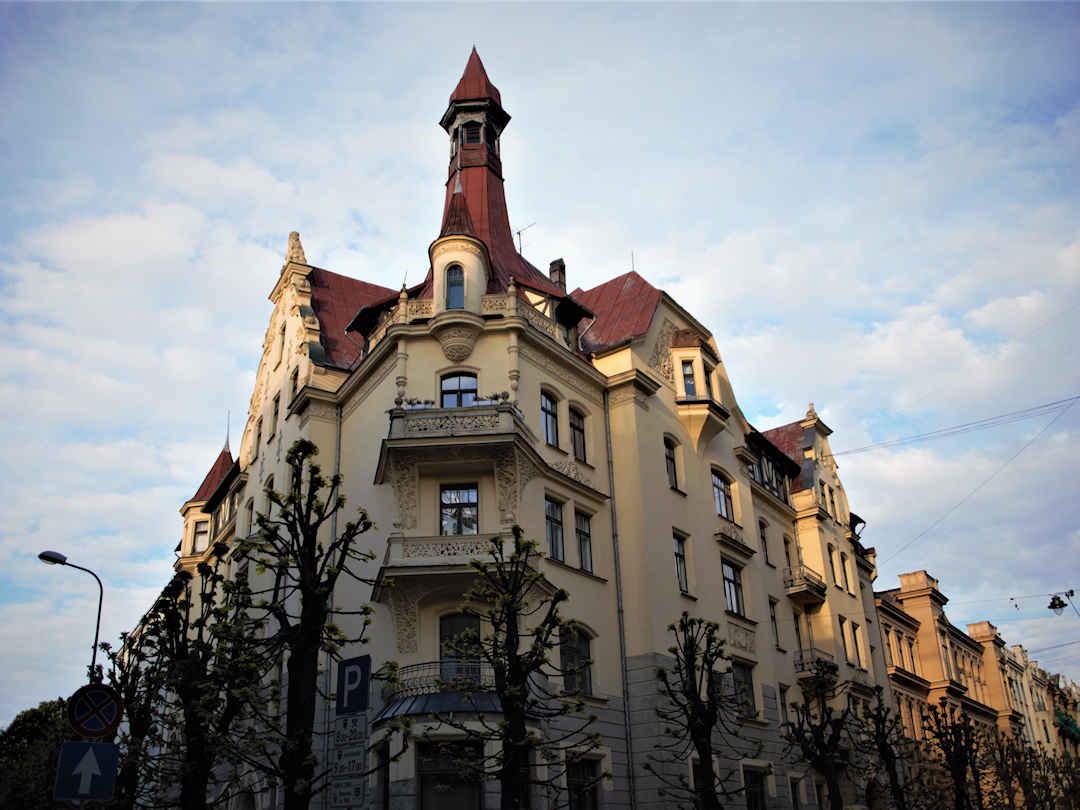
There are more than 30 museums in Riga alone, so plenty will keep you occupied if you have more time. By chance, as we had time to spare between activities, we stumbled upon the Latvian National Museum of Art. We’d never encountered a Latvian painter before, but we are familiar with the styles associated with internationally renowned artists like Rembrandt, Caravaggio, Picasso, Kandinski, etc. It was interesting to see Latvian artists’ works from the same periods as their more well-known counterparts.
Recently renovated, the building itself is a beautiful work of art in its own right. A temporary exhibition titled Chair as an Artwork also features 50 chairs using various materials. Fascinating. The cost for both the permanent and temporary exhibitions was EUR6 per person.
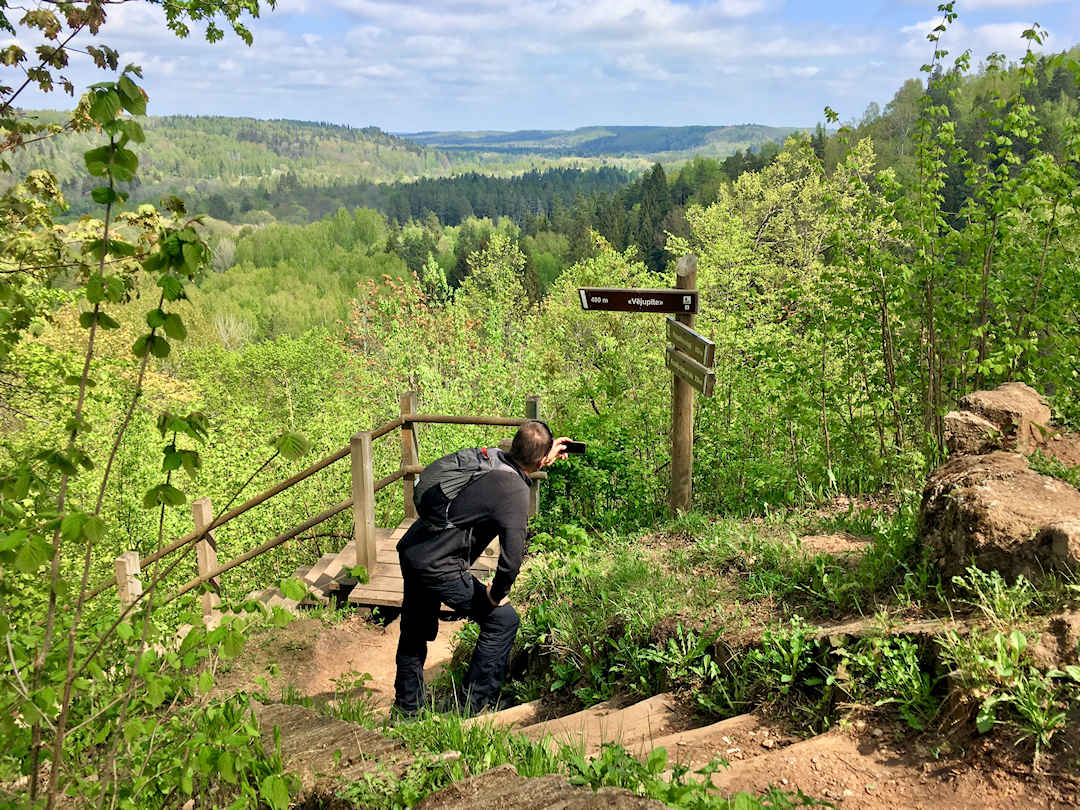
A hike in Latvia's first and largest National Park doesn't cost you a cent
Gauja National Park
Apart from a beautiful 9km hike in the Gauja National Park, Latvia’s first and largest National Park (free), we visited the ruins of the Castle of the Livonian Order in Sigulda (with an entry price of EUR8 per adult).
We also spent about five hours exploring the Cēsis Castle Complex: from the well-preserved ruins of the Livonian Castle (which you can explore with a lantern in hand) to the medieval workshops and market garden where enthusiastic Latvians showcase old crafts to the extensive collections in the Manor House Museum. The entry price of EUR8 per adult is well worth it.
How to save money on experiences
Look for free and low-cost experiences
Many activities (and some of our most treasured experiences) have been free or cost little. On our journeys, we have
- Visited many museums free of charge (including the Colosseum and Forum in Rome, which are free on the first Sunday of the month);
- Attended free guided walking tours around the world (you tip at the end based on your budget and how much you liked the tour);
- Did countless self-guided walks and used public transport to get to know a city;
- Hiked in the Andes in Ecuador and climbed volcanoes in the Caribbean;
- Swam and snorkelled at countless beaches, using tree shade rather than paying for parasols and
- Attended free street performances and danced with locals in Argentina, Cuba and the Dominican Republic.
Search for free activities at your destination; chances are someone has already made a nice list.
Be selective about paid experiences
Paying for activities and attractions can add up quickly. Therefore, look out for special offers and discount coupons. If you travel in a group, you may also pay to book a private tour and share the cost. And finally, shop around - here are some of the OTAs we use and can recommend:
Make sure you check opening times to avoid disappointment
Many Museums in Latvia are closed on Mondays. And many don’t update their opening hours on Google for public holidays or during renovation works. So, if you are in Latvia only for a short period and come to see a specific museum, it pays to check directly with the Museum to ensure they are open before you book your trip.
We had planned to visit the History of the KGB Operations in Latvia, which was on the same street as our accommodation in Riga. According to Google, it should have been open, but when we got there, a small sign on the door informed us that it was temporarily closed.
Miscellaneous
Riga has good luggage storage facilities in the central city. For EUR4, we could store our travel packs in a large locker while exploring the Central Market.
I took advantage of getting a haircut in Cēsis, which (at EUR6) was decidedly cheaper than in other Baltic towns (a fancy barber in Kaunas, for example, quoted EUR30).
Securing your currency needs overseas can be expensive, but it doesn't have to be. We've saved a significant amount of money over the years simply by knowing what to do (or, more importantly, what not to do).
- How not to get caught out by alarming FX rates and exorbitant commissions;
- How to exchange cash on your overseas trip.
- Which debit/credit card is best for your overseas trip, and
- How do you avoid unnecessary fees when withdrawing cash?
Suppose you need to transfer money to pay for your travels upfront. In that case, we recommend Wise and XE Money Transfer (we use them interchangeably, depending on which one offers the better foreign exchange rates and lower commissions).
Travel Costs Summary Table
| Categories | EUR per person per day | Percentage of total daily costs |
|---|---|---|
| Communications | 0.32 | 1% |
| Groceries and Dining | 15.61 | 36% |
| Leisure Activities | 4.50 | 9% |
| Accommodation | 19.42 | 40% |
| Miscellaneous | 1.15 | 2% |
| Health | 2.92 | 6% |
| Transport | 2.20 | 6% |
| Total per person per day | 46.12 |
Cash Requirements
From a safety point of view, we like to have as little cash as possible, yet enough not to feel uncomfortable.
Of the expenses incurred in Latvia, we paid 23% in cash. The most significant cash transaction was EUR16.50 for lunch when Kafe PRIEDE in Cēsis did not accept credit cards.
How much did it cost you to explore Latvia?
I wrote this Latvia travel cost article based on our own experience. Don’t hesitate to get in touch with me if you have explored Latvia recently and have something to add about travel costs.
Before you go, if you liked our article and found it helpful, we would appreciate it if you could share it with your friends and family via the Share buttons below. Even better: Leave a short review on Trustpilot or Google, which would help us further build our online reputation as a (trustworthy and helpful) travel and lifestyle blog.

